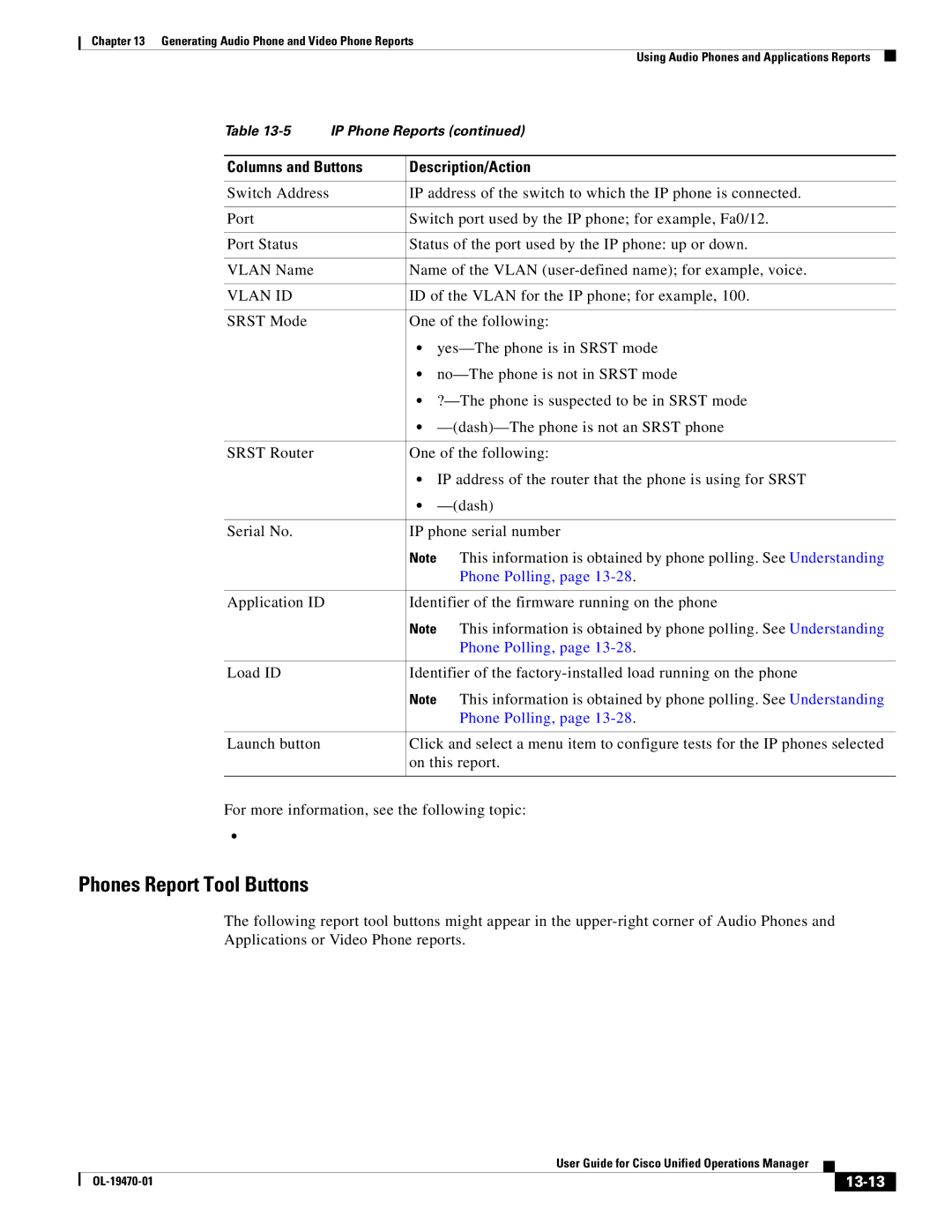Chapter 13 Generating Audio Phone and Video Phone Reports
Using Audio Phones and Applications Reports
Table | IP Phone Reports (continued) | |
|
| |
Columns and Buttons | Description/Action | |
|
|
|
Switch Address |
| IP address of the switch to which the IP phone is connected. |
|
|
|
Port |
| Switch port used by the IP phone; for example, Fa0/12. |
|
|
|
Port Status |
| Status of the port used by the IP phone: up or down. |
|
|
|
VLAN Name |
| Name of the VLAN |
|
|
|
VLAN ID |
| ID of the VLAN for the IP phone; for example, 100. |
|
|
|
SRST Mode |
| One of the following: |
|
| • |
|
| • |
|
| • |
|
| • |
|
|
|
SRST Router |
| One of the following: |
|
| • IP address of the router that the phone is using for SRST |
|
| • |
|
|
|
Serial No. |
| IP phone serial number |
|
| Note This information is obtained by phone polling. See Understanding |
|
| Phone Polling, page |
|
|
|
Application ID |
| Identifier of the firmware running on the phone |
|
| Note This information is obtained by phone polling. See Understanding |
|
| Phone Polling, page |
|
|
|
Load ID |
| Identifier of the |
|
| Note This information is obtained by phone polling. See Understanding |
|
| Phone Polling, page |
|
|
|
Launch button |
| Click and select a menu item to configure tests for the IP phones selected |
|
| on this report. |
|
|
|
For more information, see the following topic:
•
Phones Report Tool Buttons
The following report tool buttons might appear in the
Applications or Video Phone reports.
|
| User Guide for Cisco Unified Operations Manager |
|
| |
|
|
| |||
|
|
|
|
| |
|
|
|
| ||
